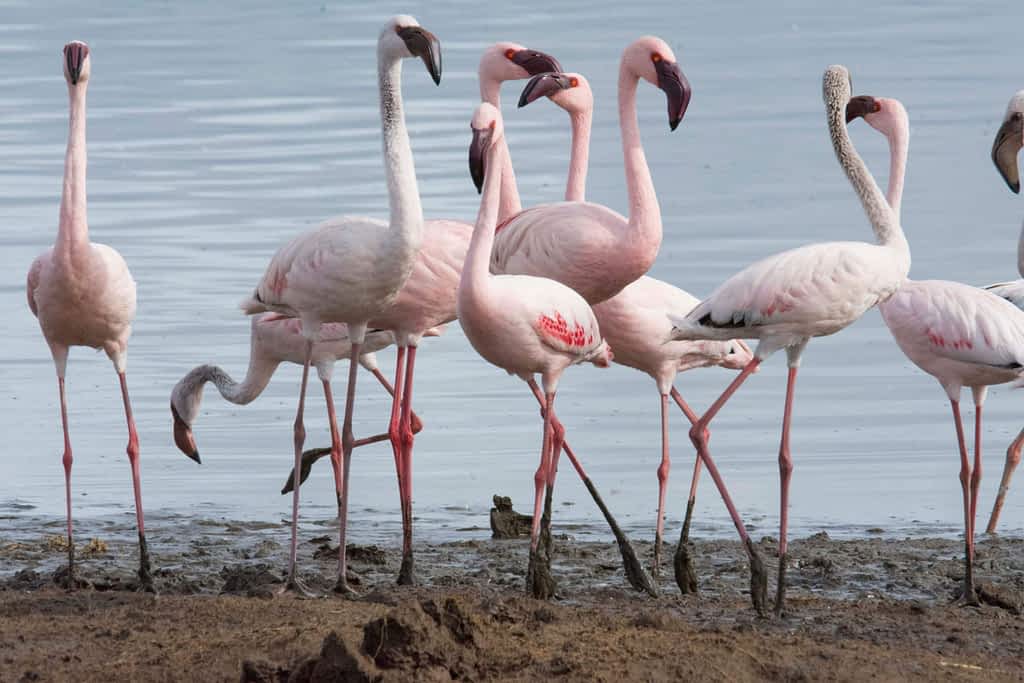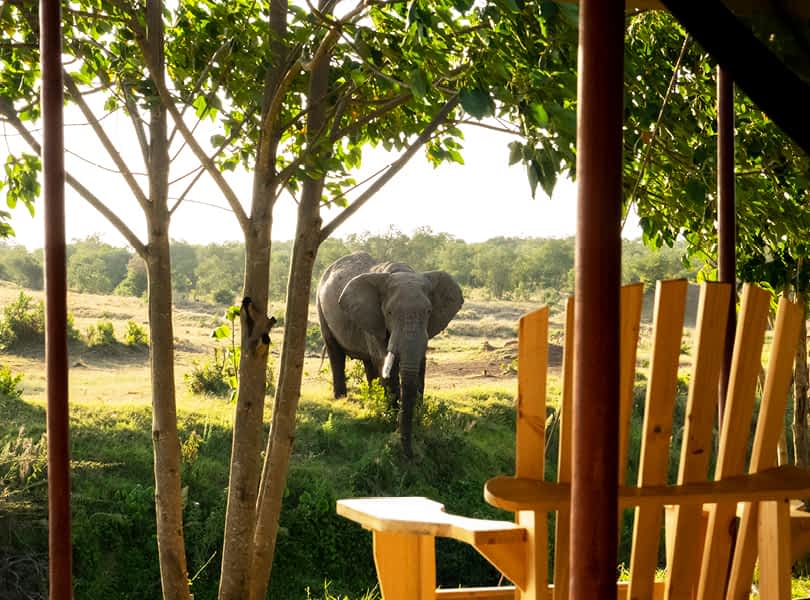Kenya is the original home of the safari and offers a broad range of wildlife and habitats that can vary dramatically depending on where you visit. Each destinations has something unique to offer.
Maasai Mara National Reserve
Maasai Mara National Reserve was established as a wildlife sanctuary in 1961, measuring 1510 square kilometers. It is one of the most famous and important wildlife conservation and wilderness areas in Africa, with its high concentration and diverse wildlife. It’s home to Africa’s famed Big Five.(elephants, rhinoceros, leopards, lions, and buffalos) as well as cheetahs, giraffes, rhinos, topis, elands and many other species.
The annual wildebeest migration, which is the largest mass movement of land mammals on the planet, takes place in the Mara (Around late July through to October). With over a million wildebeest accompanied by zebra and antelope making the treacherous journey to follow the rains.
It’s estimated to be more than 470 species of birds inhabit Maasai Mara such as, marabou storks, vultures, ostriches, crowned cranes, secretary birds, and lilac-breasted rollers which, is the Kenyan national bird.
Famed documentary’s the Big Cat Diary’s was filmed in the Mara.
Pros
- Abundant and diverse wildlife
- Wildlife is more habituated allowing. you to get closer
- Open to anyone who can self-drive
- Home of the great wildebeest migration
- Vast open landscapes
- It’s possible to see the big five in one day
- Choice of accommodation for different budgets
Cons
- Can get crowded
- No off-road driving to follow wildlife
- No night drives
Activities:
- Game drives
- Balloon rides over the Maasai Mara
- Maasai Village visit
- Picnics
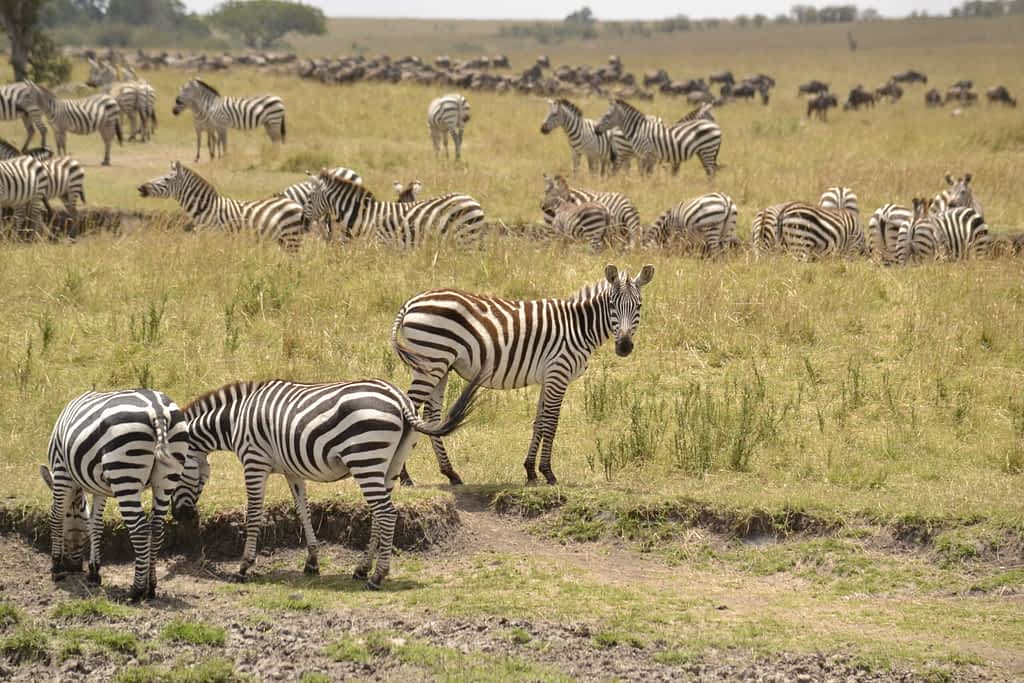
Naboisho Conservancy
Created in 2010, Naboisho is a private 50,000-acre community pastoralist and wildlife conservation area. It borders the world-famous Maasai Mara National Reserve to the southwest.
Naboisho has diverse and abundant wildlife and is known for its high density of big cats, especially lions.
Because Naboisho Conservancy limits the number of tourists, guests often find themselves the only vehicle around, giving spectacular, unspoiled views of exciting wildlife.
The Conservancy is not governed by the same rules that apply to national parks; guests are allowed to drive off-road to follow the wildlife and do night drives.
The game drives are led by guides from the Maasai community who are passionate experts.
Pros
- Away from crowds
- Most of the staff are from the Maasai tribe, giving guests authentic cultural interactions
- Walking safaris
- Can drive off-road to follow wildlife
- Because Naboisho borders the Maasai Mara National Reserve trips can easily be added to the itinerary
- Night drives where nocturnal wildlife may be spotted
Cons
- Higher conservation fees
- Limited choices in accommodation
- No rhinos
- For larger groups, you may have to book well in advance
Activities:
- Morning afternoon and evening game drives
- Balloon rides over the Maasai Mara
- Bush breakfast and dinners
- Maasai village visits
- Walking safaris with Maasai Warrior guides
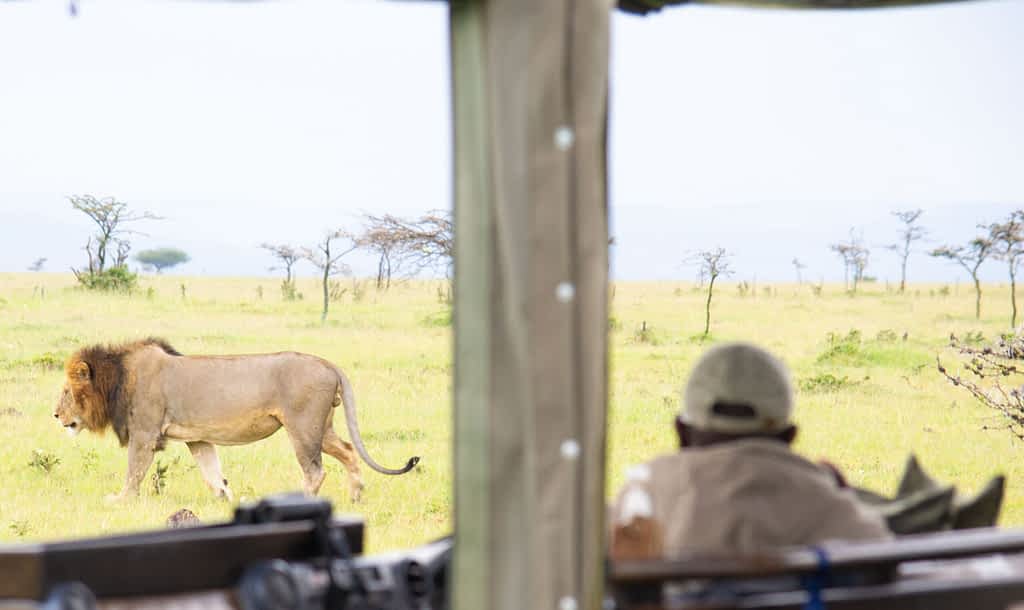
Samburu National Reserve
Samburu National Reserve is located in Northern Kenya and is a premier game reserve. This vast expanse of remote pristine wilderness measures 165 square kilometers. Samburu boasts over 900 elephants and is home to big cats – lions, leopards, and cheetahs. Its one of the few places that wild dogs may be seen.
Its a haven for unique species who are known as the Samburu five animals (Beisa oryx, reticulated giraffe, Grevy’s zebra, gerenuk and Somali ostrich.
The iconic movie “Born Free” features Samburu, one of the two regions in which Joy Adamson raised and nurtured Elsa the lioness.
Another movie, “Heart of a Lioness.” Also features the story of another renowned lioness, Kamunyak (“Blessed One”) Who became famous for adopting at least six oryx calves and protecting them against predators.
It’s the traditional homeland of the Samburu people who are one of the most colorful and flamboyant tribes in Kenya.
Pros
- Anyone can self-drive
- choice of accommodation for different budgets
- Not as busy as other well-known national reserves
- Chance to see the Samburu five species
Cons
- No off-road driving to follow wildlife
- No night drives
- Wildlife seems less than in other popular parks
Activities
- Game drives
- Visit the lesser-known Samburu tribe at a village
- Bush breakfast and dinner
- Guided bush walks

Kalama Community Conservancy
Kalama is a private community conservancy that borders Samburu National Reserve. Kalama only has one camp in it called saruni samburu which is a luxury eco camp. Because it’s a private conservancy, you pretty much have the place to yourself.
Kalama acts as a vital wildlife corridor for animals migrating between the Samburu and Marsabit areas. Its drier habitat means animals are less visible than in Samburu National Reserve.
Pros
- Expert guides from the Samburu tribe
- Exclusive experience in a beautiful wilderness
- Luxury accommodation and top-notch hospitality
- Borders Samburu National Reserve so game drives can be done there
Cons
- Expensive
- A lower density of wildlife to see
Activities
- Bush breakfast and dinners
- Stargazing
- Walking safaris with Samburu warrior guides
- Morning, afternoon,` and evening game drives
- Bush breakfast and dinners
- Photographers hide opposite waterhole
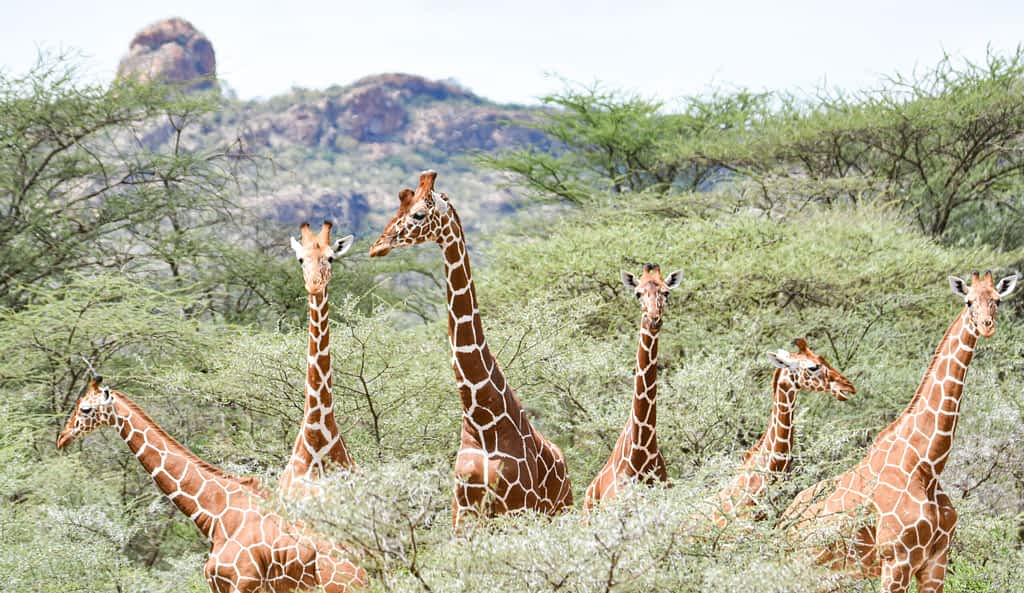
Amboseli National Park
Amboseli National Park, in Southern Kenya, is Famous for its large herds of elephants and the towering view of Mount Kilimanjaro, Africa’s highest mountain, in neighboring Tanzania.
Observation Hill offers panoramas of the park’s plains and swamps. Varied wildlife includes giraffes, zebras, cheetahs, lions, reedbucks and hundreds of bird species. The western section is dominated by vast Lake Amboseli, which is dry outside the rainy season.
If you’re looking for that iconic postcard image of elephants with Mount Kilimanjaro as the backdrop, then this is the place to get the shot.
Pros
- Anyone can self-drive
- Vast open and diverse landscapes
- Choice of accommodation for different budgets
- The spectacular view of the Mount Kilimanjaro
Cons
- Can get crowded
- Strict no off-road driving
- Night drives are not permitted
Activities:
- Game drives
- Maasai Village visit
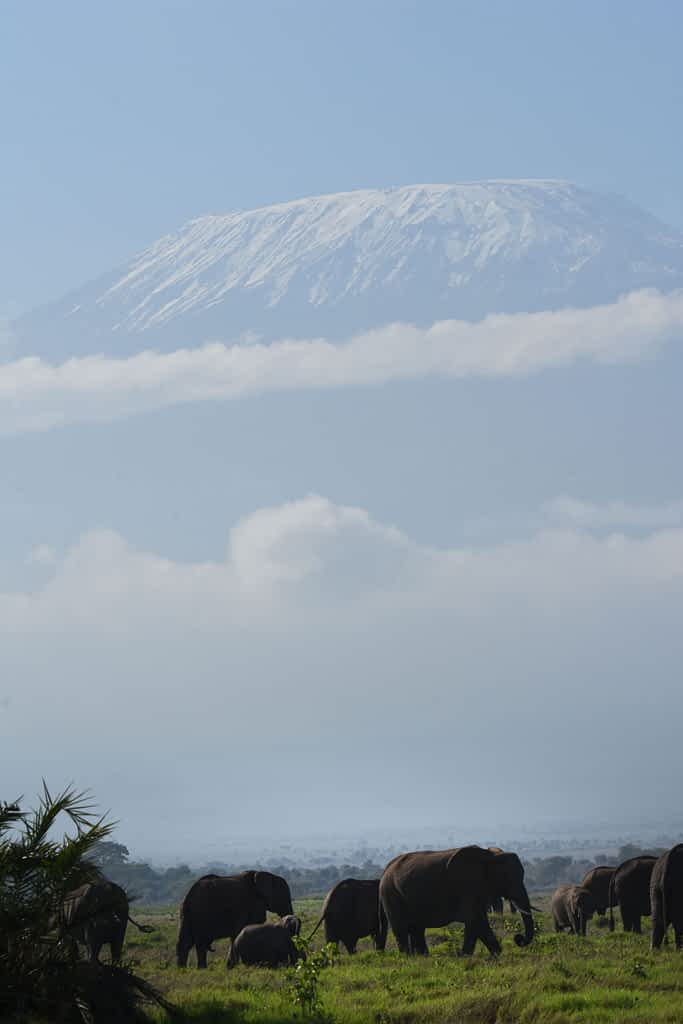
Ol Pejeta Conservancy
Ol Pejeta Conservancy is a 90,000-acre private fenced conservancy located between the Aberdare Mountains and Mount Kenya. As part of the southern Laikipia wilderness, Ol Pejeta works to protect its distinct habitats, including a wildlife corridor along the northern boundary of the conservancy.
Ol Pejeta has East Africa’s largest population of black rhinos, A high density of wildlife including the Big Five, a chimpanzee rescue centre, and numerous Conservation projects you can learn about and take part in.
Pros
- Anyone can self-drive
- A large array of activities for all ages
- Night drives are permitted
- Choice of accommodation for different budgets
- Lots of rhinos
- Possible to see the big 5
- Only two and half hours drive from Nairobi
- Lots of educational conservation information
Cons
- fences and power lines take away from the raw authentic feel
- Can get crowded, especially on weekends
Activities
- Lion monitoring
- visit the Chimpanzee Sanctuary, housing orphaned and abandoned chimpanzees,]
- Visit the last two northern rhino on the planet
- Join a bush jog with the conservancy’s rangers in the wild,
- Meet the rangers and interact with the canines of the anti-poaching unit
- Night drives
- Kids Club
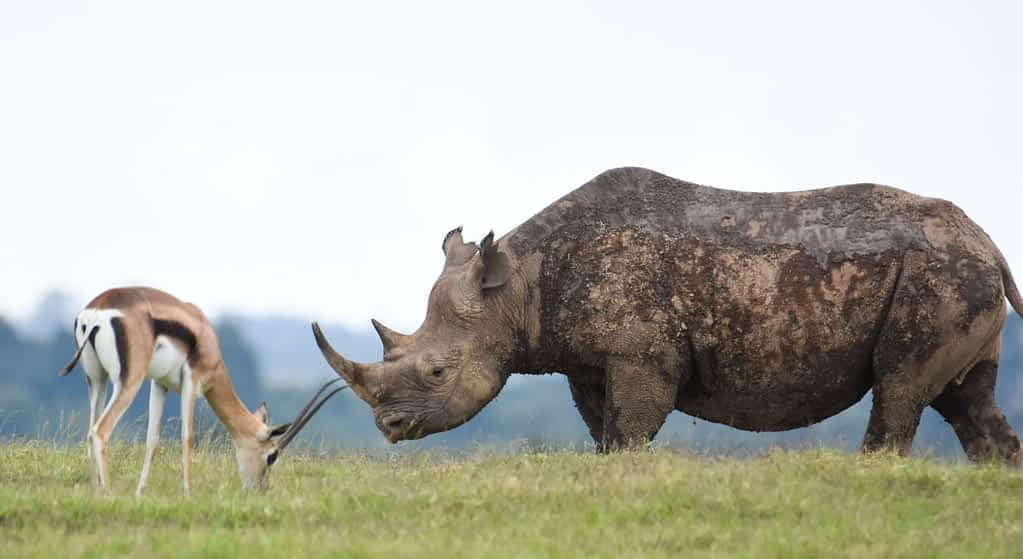
Lake Nakuru
Lake Nakuru is one of Kenya’s smaller national parks but still has a lot to offer. The park’s main feature is a large, shallow lake supporting great birdlife, including big flocks of pelicans and variable flocks of flamingos. The lake was once famous for its flamingos, however, since 2012, conditions have become unfavorable for these birds and most have moved to other Rift Valley lakes.
Lake Nakuru offers easy wildlife viewing of most big safari animals except for elephants. Black and white rhino were re-introduced in the 1990s and have bred into healthy populations. White rhinos are usually easy to see on the lakeshore. It’s also home to the endangered Rothschild giraffe, buffalo, and hippos.
Pros
- One of the few placed to see the endangered Rothschild giraffes
- Anyone can self-drive
- choice of accommodation for different budgets
- High chance of seeing rhinos
- Entrance fees are cheaper than most parks
Cons
- Small parks only need one day at the most
- No elephants
- Predators are not easy to see
Activities
- Game drives
